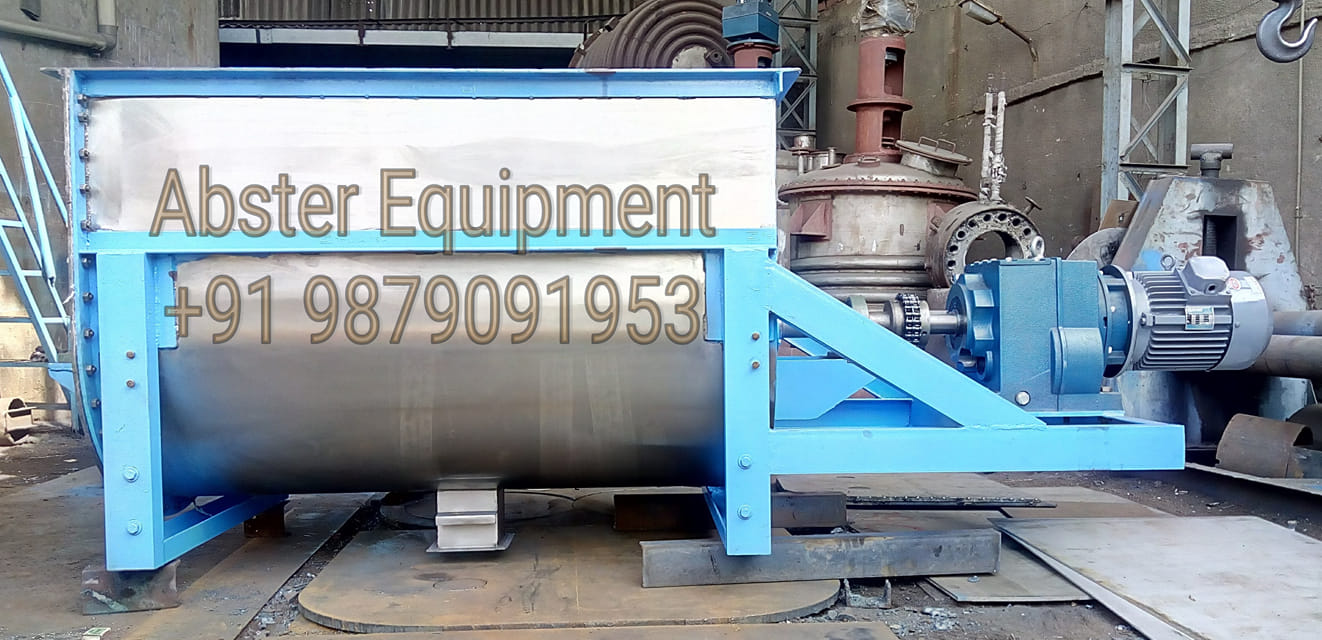Fluidized Bed Dryer
Fluidized bed dryer (also called fluid bed dryer) is a kind of equipment used extensively in the pharmaceutical industries to reduce the moisture content of pharmaceutical powder and granules. The equipment works on a principle of fluidization of the feed materials.
In fluidization process, hot air is introduced at high pressure through a perforated bed of moist solid particulate. The wet solids are lifted from the bottom and suspended in a stream of air (fluidized state). Heat transfer is accomplished by direct contact between the wet solid and hot gases. The vaporized liquid is carried away by the drying gasses. Sometimes to save energy, the exit gas is partially recycled.
A typical fluidized bed dryer consists of the following components
a. Air preparatory unit.
b. Product container.
c. Exhaust filter.
d. Exhaust blower.
e. Control panel.
f. Air distribution plate.
g. Spray nozzle. h. Solution deliver. The choice of distributor used during and drying process apart from ensuring uniform and stable fluidization also prevents 1. Poor fluidization quality of solids in certain regions in the fluidized bed dryer. 2. Plugging of distributor –perforated holes. 3. Solids from dropping into wind box or gas plenum located beneath the fluidized bed. The pressure drops across the distributor must be high enough to ensure good and uniform fluidization. Contents [show] Parameters to be controlled in fluidized bed dryers (system) In order to improve operation, efficiency, and reproducibility of a fluidized bed dryer, some parameters need to be controlled. These parameters are categorized into: Apparatus parameters: Those controlled by the equipment. Process parameters: Those controlled by the process. Product parameters: Those controlled by the product. 1. Apparatus/Equipment Parameter Position of the air distribution plate: This parameter influences the pattern. Shape of the instrument: The annular based design gives a better product. Nozzle height: Nozzle height plays a vital role when fluidized bed dryers are used as a coating machine. The atomized coating solution should not get dried before reaching the tablet surface. 2. Process/Operating Parameter Temperature: Increased temperature leads to increased moisture diffusivity and hence increased drying rate and decreased drying time. The nature of the material plays an important role in choosing the operating temperature. Humidity: Faster drying is achieved when the moisture content of the inlet air is maintained at its minimum. Airflow rate/gas velocity: Increasing gas velocity increases drying rate but should be maintained at an optimized rate (not to fast or too slow). Gas velocity has no effect on particles with high internal resistance to moisture transfer. 3. Product Parameters Moisture content of the feed material. Feed rate/batch size. Product moisture content. Particle size, shape, and diameter. Read Also: Rotary Dryer Types of Fluidized-Bed Dryers There are various types of fluidized bed dryer and an individual’s familiarity with the specific characteristics of these various types enables one to make a logical and cost-effective selection of fluidized bed dryer for a drying operation. In many instances, several different types may provide similar performance at the same cost. It should be noted also that not all modified fluidized bed dryers are necessarily better than the conventional dryers in terms of product quality, or energy efficiency, or drug performance. picture of conventional fluid bed dryers 1. Conventional Fluidized Bed Dryers Conventional fluidized bed dryers include; Batch fluidized bed dryers. Semi-continuous fluidized bed dryers. Well-mixed, continuous fluidized dryers. Plug flow fluidized bed dryer. 2. Modified Fluidized Bed Dryers Various types of modified fluidized bed dryers have been developed and are applied in many industrial processes to overcome some of the problems encountered while using conventional fluidized bed dryers for a drying process. They include but not limited to; Hybrid fluidized bed dryers Pulsating fluidized bed dryers Fluidized bed dryer with immersed heat exchange. Mechanically assisted fluidized bed dryer. Vibrated fluidized bed dryer. Agitated fluidized bed dryer/swirl fluidizers. Fluidized bed dryers of inert particles. Spouted bed dryer. Recirculating fluidized bed dryer. Jetting fluidized bed dryer. Superheated steam fluidized bed dryer. Fluidized bed freeze dryer. Heat pump fluidized dryers. It should be noted that not all modified fluidized bed dryers are necessarily better than the conventional dryers in terms of product quality, or energy efficiency, or drying performance. Advantages of Fluidized-bed Dryers 1. High rates of moisture removal due to excellent gas-particle constant which results in high heat and mass transfer rates. 2. High thermal efficiency is usually achieved if part of the thermal energy for drying is supplied by the internal heat exchanger 3. Lower capital and maintenance cost 4. Reduced contact time for drying. 5. Ease of control. Disadvantages of Fluidized Dryers 1. High pressure drops results as a result of the need to suspend the entire bed in gas which equally leads to high energy consumption. 2. Requires increased gas handling due to extensive recirculation of exhaust gas for high thermal efficiency operation. 3. Poor fluidization and low flexibility especially if the feed is too wet. 4. Not the best choice of equipment when organic solvents need to be removed during drying. 5. Non-uniform product quality for certain types of fluidized bed dryers. 6. Entertainment of fine particles. 7. High potential for attrition; and in some cases agglomeration of fine particles. 8. The conventional hot air fluidized bed dryers are not a good choice of dryer when handling toxic or flammable solids since there is danger of fire or explosion of flammability limits are exceeded.
Reference Arun S. Mujumdar (2015). Handbook of Industrial Drying. CRC Press, Taylor and Francis Group, New York.
Tags: Dryers, fluid bed dryer, fbd dryer

